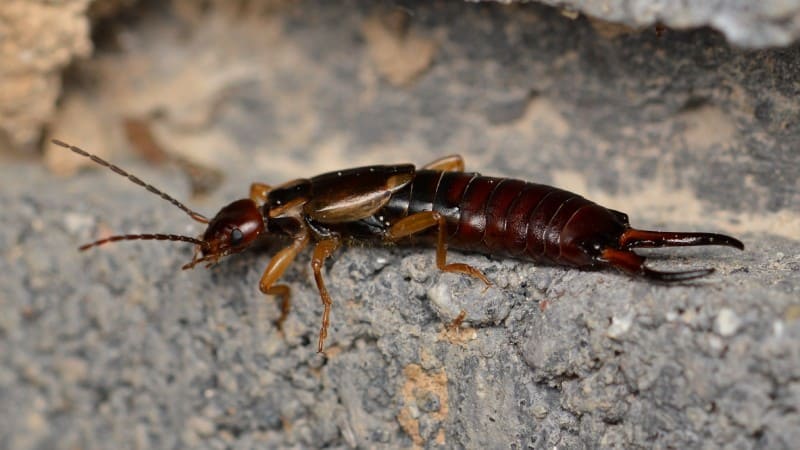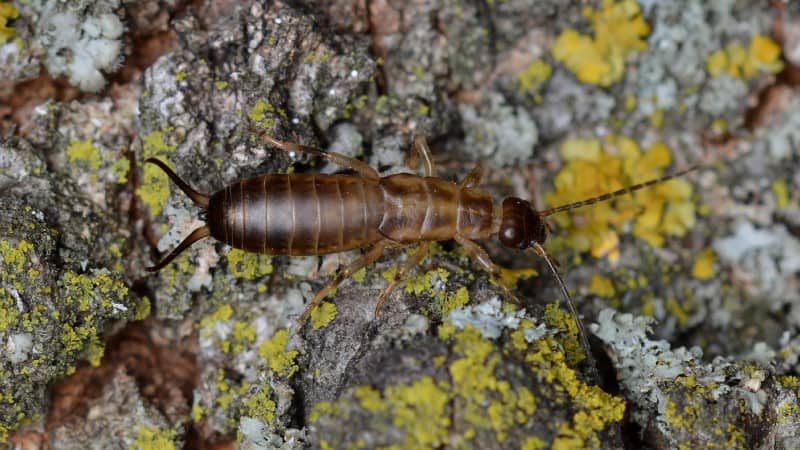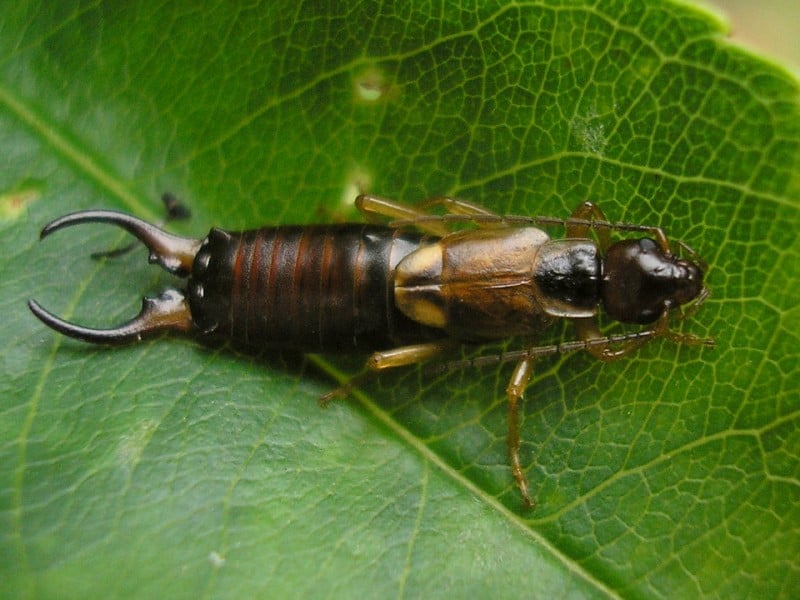
Photographer: Ryan Hodnett
CC License: https://bit.ly/1xMszCg
European Earwig Facts
- Despite the rather misleading nature of its common name, the European Earwig actually currently inhabits a much larger portion of the world than just Europe.
- This invertebrate also remains widely considered a pest, both by farmers and the general population, within the regions it inhabits.
- In areas of high concentration, this small arthropod can also wreak havoc on agricultural zones completely out of proportion to its size.
- The rather distinctive common name derives from the appearance of the hindwings. Uniquely, these strongly resemble a pair of human ears when opened.
Similar Species

Photographer: Ryan Hodnett
CC License: https://bit.ly/1xMszCg
European Earwig Physical Description
Despite its occasionally rather disproportionately fierce reputation, the European Earwig remains a rather diminutive species of insect.
Among individuals of this arthropod, no noticeable degree of sexual dimorphism is displayed. Individuals average about 0.5 in (1.3 cm) in body length.
The body shape also generally presents as flattened and rather elongated. The overall coloring generally consists of various shades of brown, with small areas of black.
Kingdom: Animalia
Phylum: Arthropoda
Class: Insecta
Order: Dermaptera
Family: Forficulidae
Genus: Forficula
Species: F. auricularia

European Earwig Distribution, Habitat, and Ecology
The European Earwig originally evolved as endemic to a rather wide swathe of Europe, Asia, and portions of Africa. However, through the actions of humans, it has also now spread to North America as well.
Experts also believe that the small animal was introduced to North America in the early 20th century. It has now spread over much of the continent.
In the wild, it thrives best in moist, cool habitats. These typically include temperate forests, gardens, and agricultural fields. However, it also commonly inhabits human homes, in rather dark crevices.
It also possesses an omnivorous diet, primarily feeding as a scavenger, as opposed to being a predator. It commonly feds on various plant matter, aphids, spiders, and their eggs.
Mating typically occurs between August and September. Following this, the female lays an average of about 50 eggs, which she guards throughout the winter.
Species Sharing Its Range
Hornet Robberfly Driver Ant Tansy Beetle
Check out our other articles on Goldsmith Beetle, Jewel Caterpillar, Titan Beetle, Budwing Mantis, Comet Moth, Giant Katydid, Goliath Stick Insect















Leave a Reply